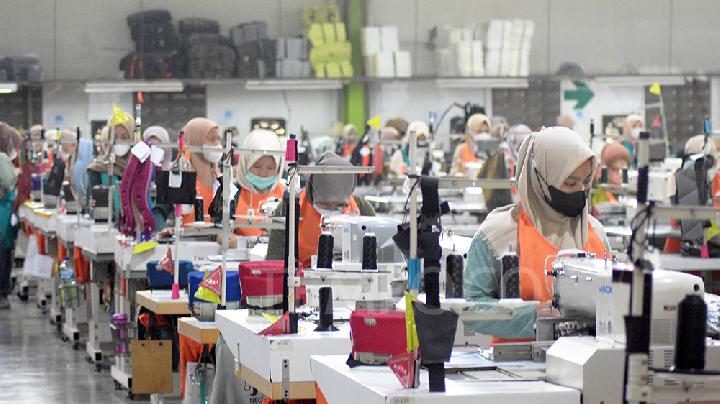After several months of contraction, Indonesia’s manufacturing sector has returned to expansion territory. The latest Purchasing Managers’ Index (PMI) data showed an increase to around 51.5 in August, up from 49.2 in July, signaling renewed momentum for industrial production. New orders, both domestic and export-driven, have contributed to this Indonesia manufacturing rebound, raising hopes that the sector may become a key engine of growth in the coming quarters.
For a country seeking to diversify its economy and strengthen competitiveness, this rebound carries important implications. Businesses and policymakers are now examining which sub-industries are leading the recovery, where bottlenecks remain, and how sustainable this growth path can be.
Key Drivers Of The Indonesia Manufacturing Rebound
Several factors explain why the sector is showing signs of resilience:
- Export Demand – Electronics, textiles, and automotive components have seen stronger orders from regional partners, particularly within ASEAN and China.
- Domestic Consumption – Retail sales indicators show rising demand for cultural goods, recreational products, and motor fuel, indirectly supporting manufacturing output.
- Government Initiatives – Incentives for industrial investment and efforts to accelerate infrastructure spending are boosting confidence.
- Global Stabilization – Easing inflationary pressures in major markets are providing breathing space for exporters.
The combination of these drivers highlights why the Indonesia manufacturing rebound is being closely watched by investors and industry leaders.
Sub-Industries Leading The Recovery
Not all industries are rebounding equally. Key sub-sectors that stand out include:
- Electronics and Electrical Equipment: Increased demand for consumer electronics and regional supply chain integration have lifted production.
- Automotive Components: Rising vehicle demand, especially in domestic and ASEAN markets, has strengthened parts manufacturing.
- Textiles and Apparel: Orders from global buyers are returning as fashion retailers restock inventories.
- Chemicals and Plastics: Growth in packaging demand has supported chemical output.
These sub-industries are essential for export diversification, helping Indonesia reduce its reliance on raw commodity exports. If supported by strong industrial policies, they could anchor a more resilient Indonesia manufacturing rebound.
Bottlenecks And Challenges Ahead
Despite positive signals, challenges remain that could slow or limit the momentum:
- Logistics And Infrastructure – Supply chain bottlenecks and high shipping costs still affect delivery times and competitiveness.
- Energy Costs – Rising electricity and fuel prices are weighing on manufacturers, especially in energy-intensive industries.
- Labor Productivity – Skills gaps persist, particularly in advanced manufacturing sectors like electronics.
- Global Risks – Trade tensions and slowing growth in major economies could dampen export demand.
Unless addressed, these bottlenecks could undermine the strength of the Indonesia manufacturing rebound and reduce its long-term sustainability.
Business Adaptation Strategies
Manufacturers are not standing still. Many firms are adapting their strategies to sustain momentum:
- Digital Transformation: Companies are investing in automation, data analytics, and digital supply chain tools.
- Green Manufacturing: To attract global buyers, manufacturers are adopting more sustainable practices, including renewable energy integration.
- Partnerships And Clusters: Firms are collaborating with local suppliers and forming industrial clusters to improve efficiency.
- Workforce Development: Investments in vocational training and upskilling programs are being prioritized.
These adaptation strategies suggest that the Indonesia manufacturing rebound is not just cyclical but could evolve into a structural transformation if supported by policy continuity.
Broader Economic Implications
The manufacturing recovery has ripple effects across the economy. It supports job creation, increases export earnings, and strengthens investor sentiment. For policymakers, sustaining the rebound means aligning trade, labor, and energy policies with industrial needs.
If momentum continues, Indonesia could strengthen its role as a regional manufacturing hub, benefiting from shifting global supply chains. But the opportunity comes with risks: failing to address structural weaknesses could see the rebound fade as quickly as it began.
Conclusion
The return of growth in Indonesia’s manufacturing sector is a welcome sign for an economy that has faced global headwinds. The Indonesia manufacturing rebound highlights the resilience of certain industries and underscores the importance of continued policy support.
With exports gaining traction, domestic demand improving, and companies adapting through innovation, the sector has the potential to drive long-term growth. However, bottlenecks in logistics, energy, and labor must be addressed to transform this rebound into sustainable industrial strength.
The next year will be crucial. If Indonesia can build on this momentum, the rebound may mark the beginning of a stronger, more diversified manufacturing future.
Read More






 Friday, 19-12-25
Friday, 19-12-25







